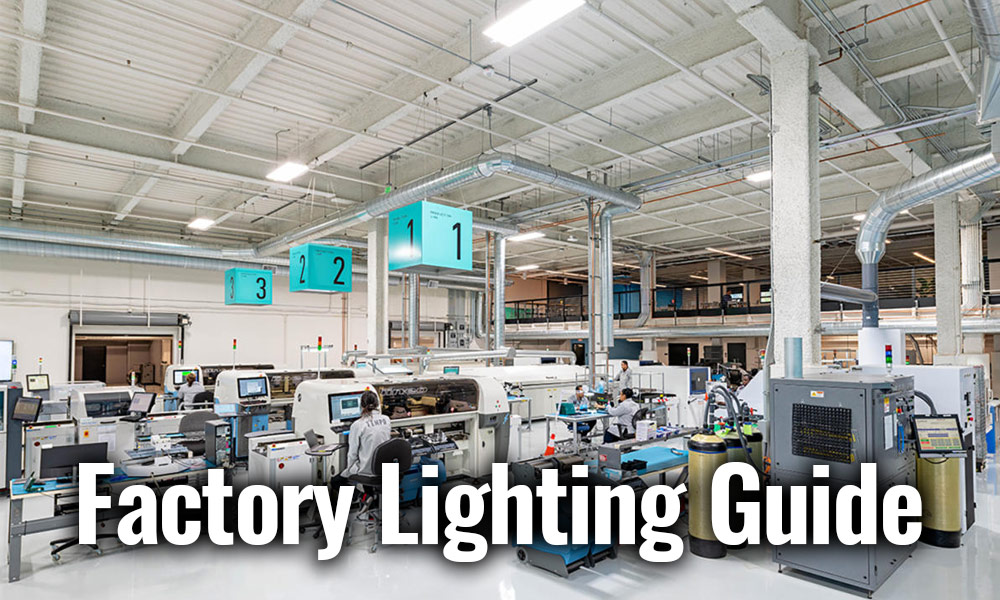
With the continuous development of LED lighting technology, LED lights, as a new environmentally friendly energy source, will enter a wider range of production and life with their advantages such as high luminous efficiency and low energy consumption. In industrial production, lighting design should consider different properties and places (such as high color rendering of food lighting, high safety performance of factory warehouse lighting, no flicker and high color rendering of assembly line lighting lamps), lighting in different places Only by strictly reviewing the cost of each process can we maintain industry leadership.
Up to 80% of the energy expenditure of a warehouse is spent on lighting, so the lighting system must be as energy efficient as possible. The LED lighting system has a longer service life, is more energy-saving and environmentally friendly, and can help companies significantly increase profits. At the same time, by reducing downtime and reducing energy consumption to reduce operating costs, ensure the safety of workshop employees and improve work efficiency.
Factory Lighting System Design & Requirements
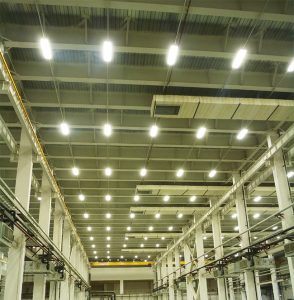 Factory lighting must meet the needs of production and inspection. The lighting system of the factory building is usually divided into two types: tall buildings and general factory buildings. For tall buildings above 15m in height, general lighting uses gas discharge lamps as the light source, and lamps with narrower beams (such as deep-lit factory lamps) are hoisted under the roof. Spotlights can be installed on the wall and on the pillars, which combine to ensure the required illumination on the work surface.
Factory lighting must meet the needs of production and inspection. The lighting system of the factory building is usually divided into two types: tall buildings and general factory buildings. For tall buildings above 15m in height, general lighting uses gas discharge lamps as the light source, and lamps with narrower beams (such as deep-lit factory lamps) are hoisted under the roof. Spotlights can be installed on the wall and on the pillars, which combine to ensure the required illumination on the work surface.
According to different areas, design appropriate uniform illumination and brightness, ideal light color and color rendering. For example, the production area uses 3 × 28 W ceiling-shaped fluorescent lamps with shades; high-level warehouses for storing products and materials In the cargo area, 250 W or 400 W metal halide lamps are used; while in the low-span office area, 3X14W grid-recessed fluorescent lamps are installed to meet the comprehensive light requirements of each area. In general workshops, fluorescent lamps can be used as the main light source, and the arrangement of the lamps can be perpendicular to the beam or parallel to the beam.
Factory lighting should be designed in accordance with the following general principles. For high illumination requirements and low density of working positions, mixed lighting should be used in places where general lighting alone is not reasonable. When the illuminance of the operation is not high, or it is not suitable to install local lighting, or it is unreasonable to use mixed lighting due to production technical conditions, general lighting should be used separately. When a certain work area needs to be higher than the general illumination illuminance, partition general illumination can be adopted. When the general lighting of the district cannot meet the requirements of illumination, local lighting should be added. Local lighting should not be installed in the work area.
Factory Light Illumination Standard
 The illuminance value of the factory lighting design should be selected in accordance with the national standard GB50034—2004 “Architectural Lighting Design Standards”. This standard specifies the illuminance values of general lighting for sixteen types of industrial buildings. Illumination standards for more specific workplaces of various types of factories should also be in accordance with relevant industry regulations. Lighting quality is a sign of how good a factory’s lighting design is. It mainly includes the following:
The illuminance value of the factory lighting design should be selected in accordance with the national standard GB50034—2004 “Architectural Lighting Design Standards”. This standard specifies the illuminance values of general lighting for sixteen types of industrial buildings. Illumination standards for more specific workplaces of various types of factories should also be in accordance with relevant industry regulations. Lighting quality is a sign of how good a factory’s lighting design is. It mainly includes the following:
1. Use lamps with high efficiency and suitable light distribution curve. According to the hanging height of the luminaire on the factory building frame, the luminaire with different light distribution is selected according to the RI value of the room shape index. When RI = 0.5 ~ 0.8, narrow light distribution lamps should be used; when RI = 0.8 ~ 1.65, medium light distribution lamps should be used; When RI = 1.65 ~ 5, wide light distribution lamps should be used.
2. Use a lighting source with an appropriate color temperature and a color rendering index that meets production requirements.
3. Achieving the specified uniformity of illumination: the uniformity of illumination in general in the work area should not be less than 0.7, and the uniformity of illumination in the vicinity of the work area should not be less than 0.5.
4. Meet the quality requirements for direct glare limitation of lighting: Uniform glare value (UGR) is in accordance with the provisions of GB50034-2004. That is, the general allowable value is 22, and the fine processing value is 19.
5. Take measures to reduce the impact of voltage fluctuations and voltage flicker on lighting and prevent strobe effects.
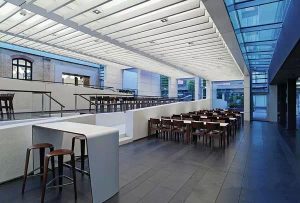 6. The lighting device shall work at the allowed working voltage. Compensation capacitors shall be used in places where metal halide lamps and high-pressure sodium lamps are used to improve their power factor. From the perspective of ceiling height and design illuminance, it is necessary to choose a suitable light distribution lamp. It is recommended to use new energy-saving LED lights for medium-height ceilings with a mounting height of about 5-10m. LED workshop lamps with uniform and wide illumination angles, no glare and no flicker. High-power LED lamps replace high-pressure mercury lamps.
6. The lighting device shall work at the allowed working voltage. Compensation capacitors shall be used in places where metal halide lamps and high-pressure sodium lamps are used to improve their power factor. From the perspective of ceiling height and design illuminance, it is necessary to choose a suitable light distribution lamp. It is recommended to use new energy-saving LED lights for medium-height ceilings with a mounting height of about 5-10m. LED workshop lamps with uniform and wide illumination angles, no glare and no flicker. High-power LED lamps replace high-pressure mercury lamps.
Why Factories use LED lighting?
 For traditional lamps, it consumes a lot of power, which is more than three times that of led lamps. The average life of traditional lamps is only one year, and LED lamps can reach 8W hours. For traditional lamps, its luminous color is monotonous, while for LED lamps, which are all solid light emitters, solid cold light sources, the luminous colors are rich. Dimmable. Led lights are energy-saving and environmentally friendly, shockproof, waterproof, miniature, high brightness, easy dimming and other advantages. For traditional lamps, there is mercury in the interior. If the bulb is damaged, it will directly affect people’s safety issues. So for LED lamps, its advantages are relatively obvious, so people will prefer LED lamps in factories and workshops. It is also more worry-free to use. In actual procurement, select the appropriate wattage led lamp according to the actual situation. Factory led lights have longer life and more stable performance. The frequency of post-maintenance replacement is low. Save a lot of maintenance costs.
For traditional lamps, it consumes a lot of power, which is more than three times that of led lamps. The average life of traditional lamps is only one year, and LED lamps can reach 8W hours. For traditional lamps, its luminous color is monotonous, while for LED lamps, which are all solid light emitters, solid cold light sources, the luminous colors are rich. Dimmable. Led lights are energy-saving and environmentally friendly, shockproof, waterproof, miniature, high brightness, easy dimming and other advantages. For traditional lamps, there is mercury in the interior. If the bulb is damaged, it will directly affect people’s safety issues. So for LED lamps, its advantages are relatively obvious, so people will prefer LED lamps in factories and workshops. It is also more worry-free to use. In actual procurement, select the appropriate wattage led lamp according to the actual situation. Factory led lights have longer life and more stable performance. The frequency of post-maintenance replacement is low. Save a lot of maintenance costs.
Factory LED Lamps vs Traditional Lamps – The Comparison
1. Energy saving effect
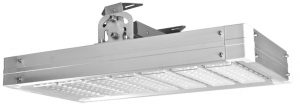 Comparison of one-year and three-year total investment for traditional high-pressure mercury lamps and LED lamps. In the long run, it can bring considerable economic benefits to the owners. The life of the new LED lamp is ≥80,000 hours, which is calculated based on the average daily lighting time of 24 hours, which is equivalent to a continuous use of at least 5 years. After the energy-saving retrofit of lighting, compared with the total expenditure of using high-pressure mercury lamps for three years using LED lamps, a total of 370,600 yuan was saved in three years. According to the above data, it can be concluded that after using LED lamps, the procurement cost can be recovered through power saving in about 2 years. At the same time, it can reduce 848 tons of CO2 emissions and 25.5 tons of S02 emissions in three times, which is equivalent to saving 340 tons of standard coal, which has huge economic and social benefits. As we all know, compared with high-pressure sodium lamps or metal halide lamps for plant lighting, the initial investment cost of LED lamps is obviously much higher than traditional lamps. However, due to the high light efficiency of the LED light source, plus the advantages of strong directivity of the LED light source when it is made into a lamp, the efficiency of the LED lamp is much higher than traditional lamps, so its energy saving characteristics Obviously. More than 80% energy saving than traditional lamps.
Comparison of one-year and three-year total investment for traditional high-pressure mercury lamps and LED lamps. In the long run, it can bring considerable economic benefits to the owners. The life of the new LED lamp is ≥80,000 hours, which is calculated based on the average daily lighting time of 24 hours, which is equivalent to a continuous use of at least 5 years. After the energy-saving retrofit of lighting, compared with the total expenditure of using high-pressure mercury lamps for three years using LED lamps, a total of 370,600 yuan was saved in three years. According to the above data, it can be concluded that after using LED lamps, the procurement cost can be recovered through power saving in about 2 years. At the same time, it can reduce 848 tons of CO2 emissions and 25.5 tons of S02 emissions in three times, which is equivalent to saving 340 tons of standard coal, which has huge economic and social benefits. As we all know, compared with high-pressure sodium lamps or metal halide lamps for plant lighting, the initial investment cost of LED lamps is obviously much higher than traditional lamps. However, due to the high light efficiency of the LED light source, plus the advantages of strong directivity of the LED light source when it is made into a lamp, the efficiency of the LED lamp is much higher than traditional lamps, so its energy saving characteristics Obviously. More than 80% energy saving than traditional lamps.
2. Good light source, material and color rendering index
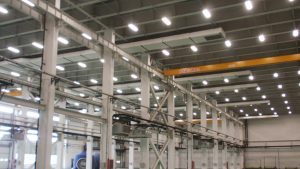 The LED light uses ultra-bright LED white light as the light source, the shell uses aluminum alloy, the outer cover uses high-efficiency lens, the heat dissipation uses copper sheet heat conduction and aluminum alloy strips to dissipate natural air circulation to make heat dissipation more perfect, and the shape will also meet the different needs of customers Constantly changing, LED lights have high power, equivalent to 100W LED lights can replace 500W sodium lamps, have good color rendering, energy saving, wide starting voltage, no flicker. The lighting of the electronic industrial plant requires better color rendering to meet the original color reduction of the object, especially the production inspection area. At the same time, the light source should have high luminous efficiency to achieve the purpose. In the long run, it can bring considerable economic benefits to the owners.
The LED light uses ultra-bright LED white light as the light source, the shell uses aluminum alloy, the outer cover uses high-efficiency lens, the heat dissipation uses copper sheet heat conduction and aluminum alloy strips to dissipate natural air circulation to make heat dissipation more perfect, and the shape will also meet the different needs of customers Constantly changing, LED lights have high power, equivalent to 100W LED lights can replace 500W sodium lamps, have good color rendering, energy saving, wide starting voltage, no flicker. The lighting of the electronic industrial plant requires better color rendering to meet the original color reduction of the object, especially the production inspection area. At the same time, the light source should have high luminous efficiency to achieve the purpose. In the long run, it can bring considerable economic benefits to the owners.
3. Classification of factory LED lights
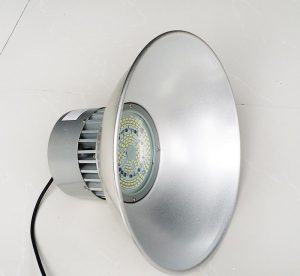 LED indoor lighting fixtures are currently subdivided by name: spotlights, ceiling lights, ceiling lights, downlights, bulb lights, lamp tubes, flat lights, kitchen and bathroom lights. Among them, there are spotlights: ceiling spotlights, track spotlights, and small spotlights. Normally, you need to use spotlights for angled irradiation at a specific position (the angle of the spotlight can be made 15 degrees, 30 degrees, 45 degrees, 60 degrees, 90 degrees, etc.), but because some spotlights (ceiling spotlights) are installed according to their installation methods (embedded on the ceiling), many factories collectively refer to ceiling spotlights and downlights Ceiling lamps, so many factories have different names for lamps. You can tell the lamp company about the purpose of the lamp, and they will give you some opinions. It can be seen from the picture that it is angled (mainly from the lens). Come up to change the angle for the second time, because the LED lamp beads are packaged at 120 degrees, and the angle needs to be changed through the lens for the second time) so it can be called a ceiling spotlight.
LED indoor lighting fixtures are currently subdivided by name: spotlights, ceiling lights, ceiling lights, downlights, bulb lights, lamp tubes, flat lights, kitchen and bathroom lights. Among them, there are spotlights: ceiling spotlights, track spotlights, and small spotlights. Normally, you need to use spotlights for angled irradiation at a specific position (the angle of the spotlight can be made 15 degrees, 30 degrees, 45 degrees, 60 degrees, 90 degrees, etc.), but because some spotlights (ceiling spotlights) are installed according to their installation methods (embedded on the ceiling), many factories collectively refer to ceiling spotlights and downlights Ceiling lamps, so many factories have different names for lamps. You can tell the lamp company about the purpose of the lamp, and they will give you some opinions. It can be seen from the picture that it is angled (mainly from the lens). Come up to change the angle for the second time, because the LED lamp beads are packaged at 120 degrees, and the angle needs to be changed through the lens for the second time) so it can be called a ceiling spotlight.
What LED lights are Generally Used in Factory Buildings and Workshops
 For LED lamps, the range of places where they are used is relatively wide. The lamps used are different in different places. In some domestic factories and workshops, what are the installation conditions and lighting requirements? There are certain requirements for led lamps. In China’s lighting standards, different factories and workshops have different illumination requirements. For workshops, its height is a problem because of the different types of workshops, so for led lights. The uniformity and strength of the LEDs are different. The power of the LED lamps needs to be determined according to the overall area of the workshop and the installation span of the lamps. In actual life, the use of LED lamps is becoming more and more widespread. Some large factories have gradually replaced traditional lamps with traditional ones. In actual prices, LED lamps are more expensive than traditional lamps, but it still has many advantages.
For LED lamps, the range of places where they are used is relatively wide. The lamps used are different in different places. In some domestic factories and workshops, what are the installation conditions and lighting requirements? There are certain requirements for led lamps. In China’s lighting standards, different factories and workshops have different illumination requirements. For workshops, its height is a problem because of the different types of workshops, so for led lights. The uniformity and strength of the LEDs are different. The power of the LED lamps needs to be determined according to the overall area of the workshop and the installation span of the lamps. In actual life, the use of LED lamps is becoming more and more widespread. Some large factories have gradually replaced traditional lamps with traditional ones. In actual prices, LED lamps are more expensive than traditional lamps, but it still has many advantages.
LED Explosion-proof Lights for Factory
1. Energy saving
Nowadays, factory warehouses and workshops choose to use LED explosion-proof lights, which saves the limited resources of the earth from a large place, and saves electricity costs from a small place.
2. Durable
Today’s LED explosion-proof lamps are more durable than metal halide lamps and energy-saving lamps. Its average life is 7 years. To achieve a long life, you must use good lamp beads and power supplies. For example, like everyone smoking, the same brand There are high and low prices, the taste is definitely different.
3. Better for Security
Safety LED explosion-proof lights are of concern to everyone. In the past, everyone used energy-saving lamps or dozens of lights to solve the problem. No accidents occurred in long-term use, but the bulbs were checked by the fire department. They cannot be used in some flammable and explosive warehouses and workshops.
4. Warranty
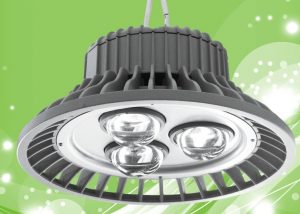 Many users who have used some energy-saving lamp light sources are saying that a lamp is broken within two months after they are replaced. One thing they have in common is that the lamp housing is an explosion-proof lamp, and the light source inside is an energy-saving lamp. Or metal halide light sources, these two light sources are third-generation light sources, and LEDs are the fourth-generation light sources. LEDs appeared to solve the shortcomings of the third-generation light sources. Short-term problems, so everyone using explosion-proof lamp housings to install energy-saving lamps will be broken, because his lamp housing has good sealing performance, the heat inside is concentrated in the lamp housing, the heat will cause problems, and LED The light source is synonymous with cold light source. His heat is 40% less than energy-saving lamps. If the workshop is very high, it is very troublesome to change the lights every month. Although the replacement cost is not high, but the replacement frequency is too high, which affects the production efficiency, which is also uneconomical.
Many users who have used some energy-saving lamp light sources are saying that a lamp is broken within two months after they are replaced. One thing they have in common is that the lamp housing is an explosion-proof lamp, and the light source inside is an energy-saving lamp. Or metal halide light sources, these two light sources are third-generation light sources, and LEDs are the fourth-generation light sources. LEDs appeared to solve the shortcomings of the third-generation light sources. Short-term problems, so everyone using explosion-proof lamp housings to install energy-saving lamps will be broken, because his lamp housing has good sealing performance, the heat inside is concentrated in the lamp housing, the heat will cause problems, and LED The light source is synonymous with cold light source. His heat is 40% less than energy-saving lamps. If the workshop is very high, it is very troublesome to change the lights every month. Although the replacement cost is not high, but the replacement frequency is too high, which affects the production efficiency, which is also uneconomical.
Features of Factory LED lights
LED factory light is a kind of LED lighting, suitable for any factory, large area, stadium, market, stage, etc. The following introduces the characteristics of LED factory lights. LED factory light is a kind of LED lighting, suitable for any factory, large area, stadium, market, stage, etc. The following introduces the characteristics of LED factory lights.
1. Imported high-power LED chips are used, and the lumen value per watt is above 110LM.
2. Long life and low power consumption. High-power LEDs can be used continuously for 50,000 hours and have a service life of more than 9 years. Saves 60% of electricity than high-pressure sodium lamps and 80% of electricity than incandescent lamps.
3. Reduce project construction costs. The project can save more than 70% in the investment of supporting embedded power transmission, transformers, distribution cabinets, laying cables, etc. The total project price is equivalent to the price of high-end street lamps (sodium lamps), which is more suitable for solar street lamps due to energy saving.
4. Integrated system design (radiator is the lamp housing). Fully guarantee the requirements of LED heat dissipation and life guarantee. Although the development cost ratio is high, the quality assurance ratio is higher. Wide voltage input and constant current for LED work. That is, the size of the power grid fluctuation is not required, and the brightness and service life of the lamps are not affected by the power grid fluctuation.
 5. Design of temperature compensated constant current technology. The LED factory light has no time-delay process, and it will reach normal brightness when it is powered on. Design of PWM constant current technology. It is the best driving method for LED, and it is also the most ideal working power supply to ensure the service life of LED.
5. Design of temperature compensated constant current technology. The LED factory light has no time-delay process, and it will reach normal brightness when it is powered on. Design of PWM constant current technology. It is the best driving method for LED, and it is also the most ideal working power supply to ensure the service life of LED.
6. Unique LED package and optical integration design and high color rendering. Make the room better to recognize the clarity of things, and reduce visual fatigue.
7. Large heat dissipation area. Ensuring the junction temperature of the LED at work is higher than that of the traditional LED factory lamp when it is used at high temperature in summer, which will cause the junction temperature to be too high and affect the life of the LED.
8. High brightness LED and high luminous efficiency and high efficiency power supply. The factory lighting does not need a traditional light source with large wattage and a low-efficiency driving power source, which fully reflects the advantages of energy saving.
9. LED light source is non-polluting material and violet infrared radiation. Makes a significant contribution to environmental protection and eye protection.
10. No high pressure and no dust. Eliminate the traditional high-voltage light source factory lights due to high-pressure dust absorption caused by excessive dust in the lampshade, which affects light radiation.
11. High power factor, low harmonic distortion. PF≥0.99; THD <10%, it can protect the power supply line from pollution.
12. Multiple color temperature selection. It can better meet the requirements of different occasions.
 During the continuous development of science and technology, a new LED smart lighting system has been developed, which has significantly better performance than traditional lighting systems, and has been widely used in the field of factory lighting, which effectively simplifies later maintenance and management and extends the using time of the lighting system. LED smart lighting system’s power saving and emission reduction benefits in factory lighting, in order to better utilize the advantages of LED lighting system, achieve the goal of energy saving in factory lighting, and improve the overall efficiency of the factory. Factory lighting luminaires should be selected according to environmental conditions, working and production conditions, and due attention should be paid to beautiful appearance, convenient installation and coordination with buildings, so as to achieve technical economy and reasonableness. Factory LED lighting will play an important role in future industrial development. It is an indispensable part of social and economic development.
During the continuous development of science and technology, a new LED smart lighting system has been developed, which has significantly better performance than traditional lighting systems, and has been widely used in the field of factory lighting, which effectively simplifies later maintenance and management and extends the using time of the lighting system. LED smart lighting system’s power saving and emission reduction benefits in factory lighting, in order to better utilize the advantages of LED lighting system, achieve the goal of energy saving in factory lighting, and improve the overall efficiency of the factory. Factory lighting luminaires should be selected according to environmental conditions, working and production conditions, and due attention should be paid to beautiful appearance, convenient installation and coordination with buildings, so as to achieve technical economy and reasonableness. Factory LED lighting will play an important role in future industrial development. It is an indispensable part of social and economic development.

